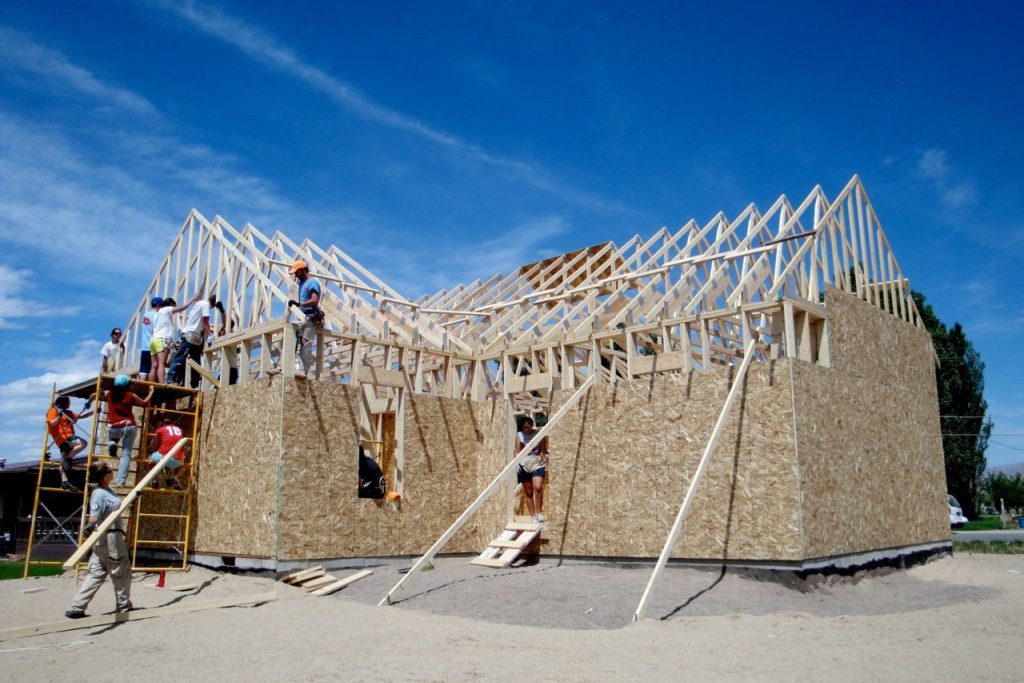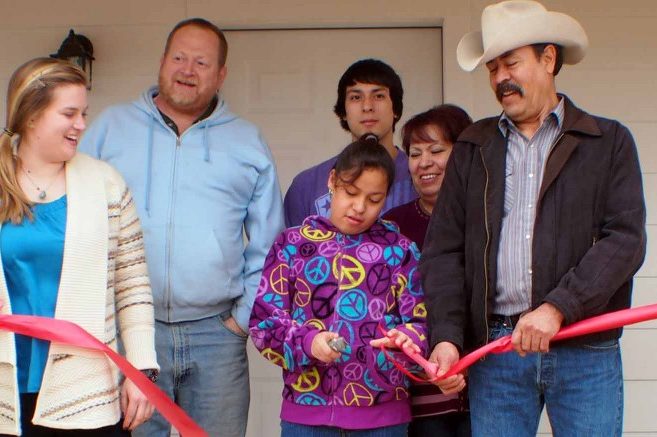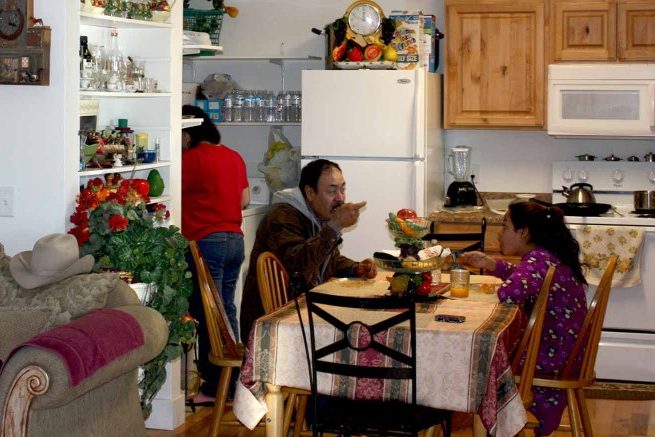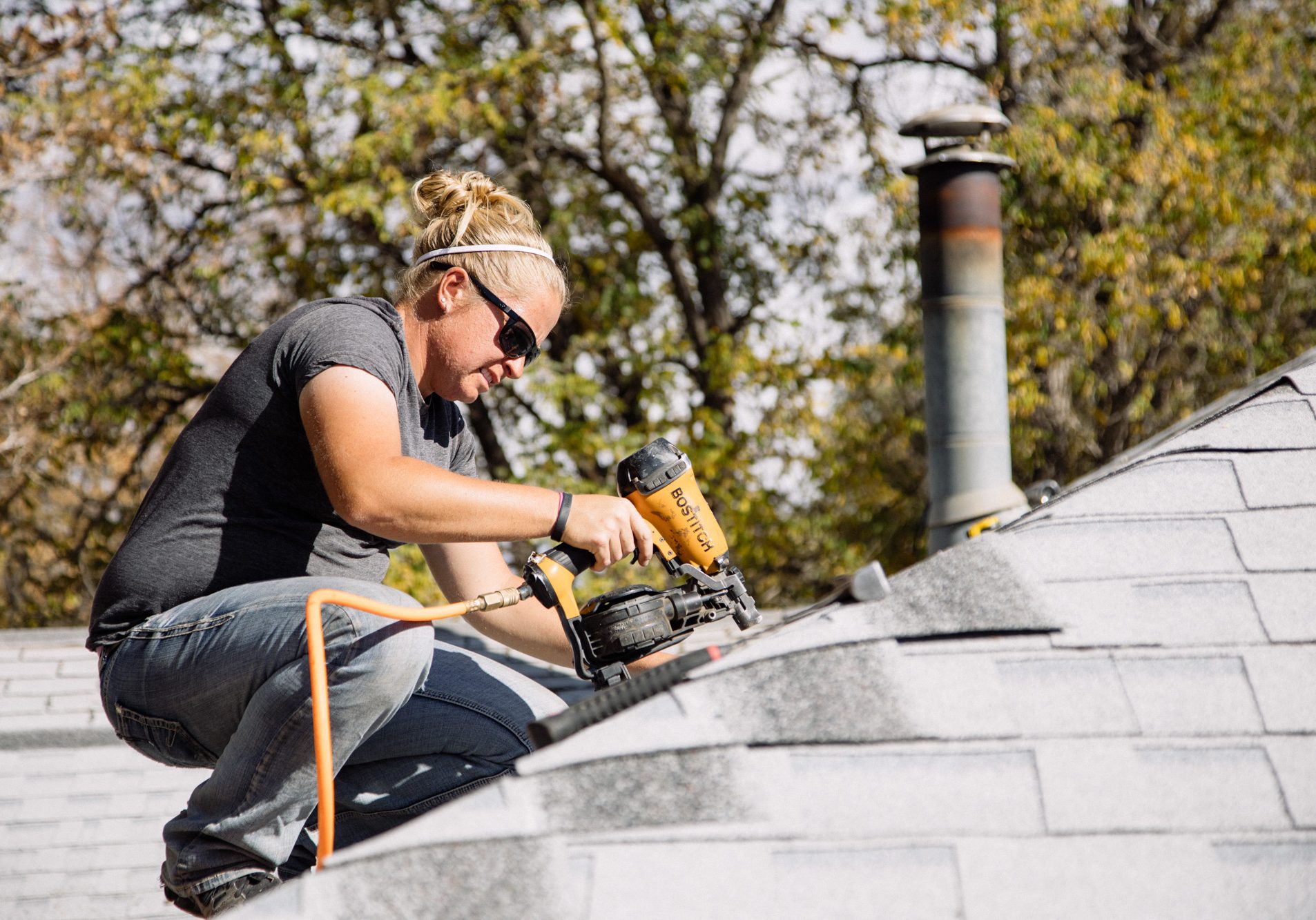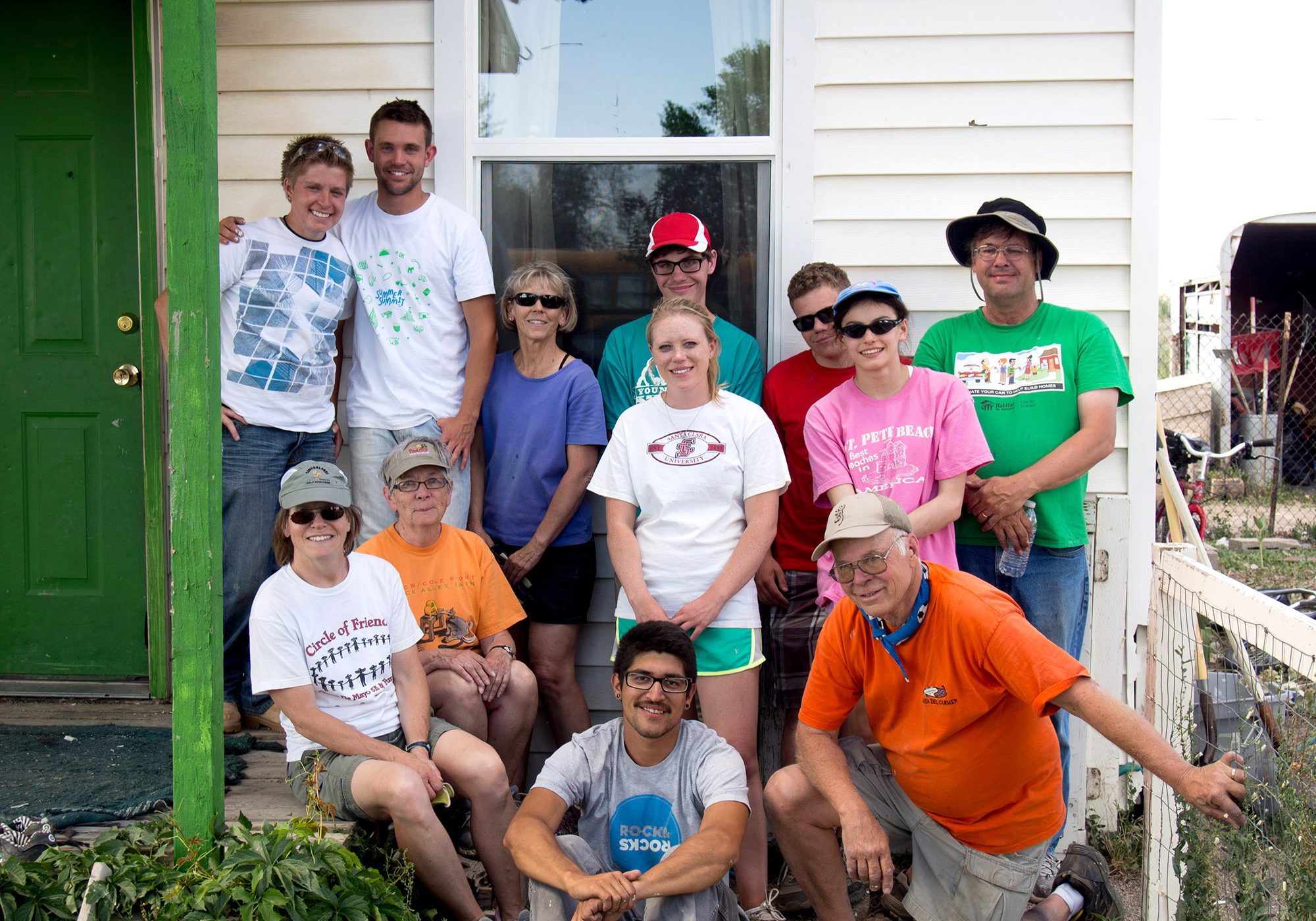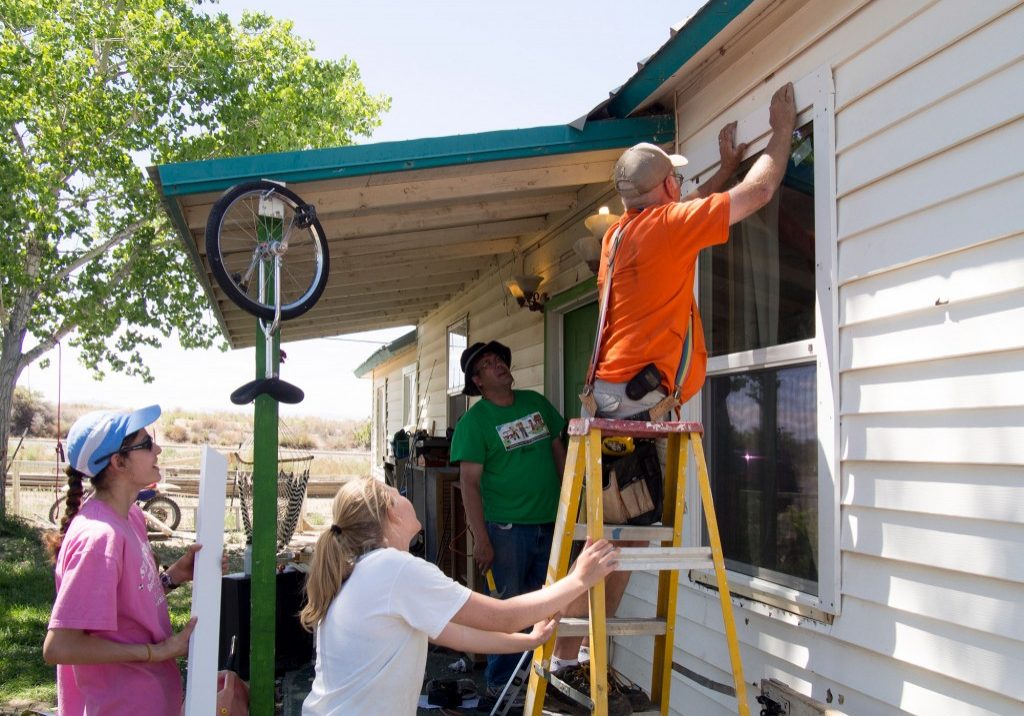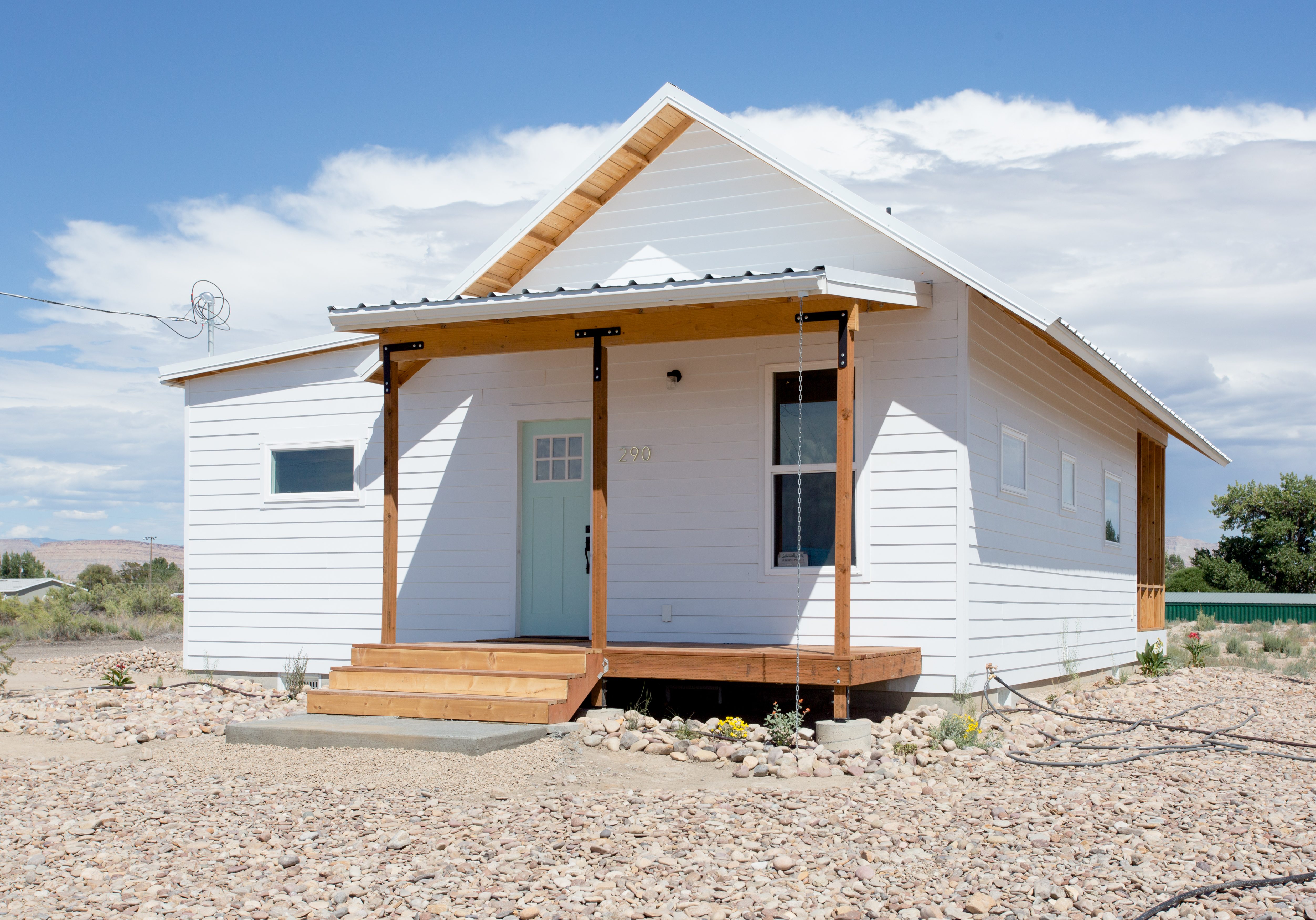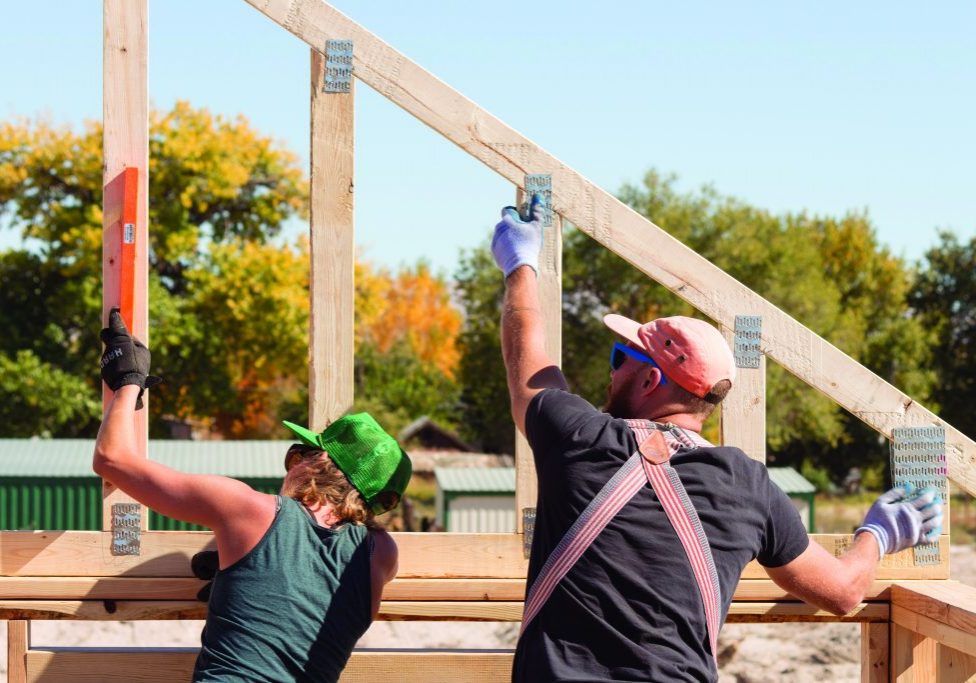The Beginning
At the start, Epicenter focused on the immediate housing services that our small team and budget could provide, such as use of our internet, application assistance for social services and housing loans, and connection to housing resources such as local contractors. Early in our practice we met Randy (aka “Bear”), a local resident who wanted to move out of his mobile home. We helped Bear secure an affordable loan he used to purchase land and hire a local contractor who designed and built him a house.
These first steps encouraged us to design and build a house of our own. Still new to the work, we decided to partner with an existing organization that had experience developing new housing in the area: Habitat for Humanity of Castle Country. With their help, we designed, funded, and built a 1,064 sq. ft. house for a local family. Its completion marked a major milestone for Epicenter. The house was also the first Habitat home built in Green River.
Assessment & Planning
As Epicenter matured, we soon discovered the data necessary to quantify the need for housing didn’t exist for Green River. We now gather our own data through surveys, focus-groups, windshield surveys, and more to inform our work. The full studies, many created in partnership with outside expertise and assistance, are linked here:
Fix it First
In response to the housing assessment that found 49% of houses in Green River needed repairs, we developed our Fix It First program. Fix It First helps elderly, disabled, and/or moderate to low-income homeowners improve their home by fixing minor problems before they become major problems. Costs are repaid by the homeowner at a low interest rate and placed back into the revolving loan fund which is used to repair more homes for more families in perpetuity. Along with the loan, Epicenter manages the entire project. From 2012-15, Epicenter completed 60 home repair projects for Green River residents.
The Frontier House
In rural America, affordable housing options are often limited to inefficient mobile homes (“trailers”) which both depreciate in value and incur high ongoing maintenance costs as they deteriorate. To provide an alternative to trailers, we’ve designed the Frontier House, a prototype to test an affordable and high-performance single-family housing option for our region. Our first iteration is a 708-square-foot house, scaled to the city’s minimum house size while meeting the needs of those living in trailers. We designed, built, and funded this prototype in-house from 2015-17. To improve upon Frontier House 1.0, we're observing its performance to inform future iterations which could include duplex and accessory dwelling designs. Epicenter current rents the Frontier House to our staff and volunteers.
The Future: Canal Commons
Moving forward, Epicenter is completed focused using the lessons learned from the projects mentioned above as well as through our other work in order to develop Canal Commons, a new neighborhood along the historic canal in Green River. These much-needed homes focus on high quality design, affordability, energy efficiency, and accessibility. This project also features the old town park restored as Pearl Baker Park, with natural playscapes, outdoor classrooms, and shaded picnic areas among a tall grove of cottonwood trees.
As a part of this ongoing work, we were honored to host an Enterprise Rose Architectural Fellow from 2019-21. Through this partnership with Enterprise Community Partners, we analyzed possible approaches and created an implementation plan for housing (Canal Commons) that we hope is not only applicable to Green River, but also other small communities in the Intermountain West.
More information can be found on Canal Commons here.
